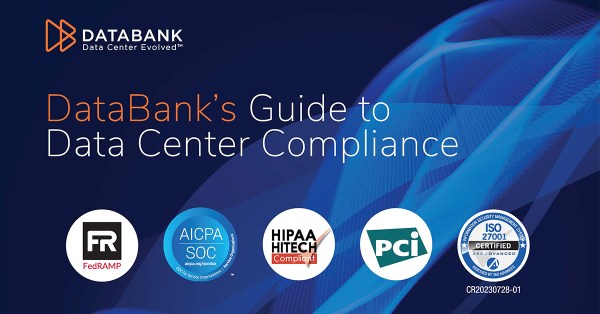Data governance is now core to the operations of just about all modern businesses. For the vast majority of businesses, a part of this involves ensuring compliance with certain data security standards. With that in mind, here is a quick guide to what you need to know about compliance in data centers.
Understanding compliance in data centers
Compliance in data centers is the process of achieving and maintaining demonstrable adherence to mandated data security standards. These data security standards are typically set down by regulatory bodies and relate to the areas they oversee. For example, the Payment Card Industry Security Standards Council (PCI SSC) oversees PCI/DSS.
Sometimes, data security standards are set down by a government or government agency. In general, however, these data security standards relate to the government body itself. For example, FedRAMP is overseen by the U.S. federal government and relates to working with the U.S. federal government.
Compliance in data centers vs data sovereignty rules
Data sovereignty rules are the rules that determine which government(s) has/have jurisdiction over what data. These data sovereignty rules may in turn determine how data is to be treated. This means that data sovereignty rules can have much the same impact as compliance rules. Technically, however, they are different.
For example, if data relates to EU residents (not just citizens), the EU automatically claims data sovereignty over it. The EU requires all entities handling this data to comply with its general data protection regulations (GDPR). GDPR is not, technically, a compliance program. Effectively, however, it operates as one and is often treated as one.
Challenges in data center compliance
Here are five of the main challenges in achieving and maintaining compliance in data centers along with some suggestions on how you can address them.
Complex regulatory frameworks
Implement a robust compliance management system that centralizes all relevant regulations and standards. Utilize automated tools for tracking updates and changes in regulations. Regularly engage legal and compliance experts to interpret and apply complex requirements accurately.
Rapidly evolving standards and laws
Continuously monitor industry sources for information about regulatory and legal changes. Establish a dedicated team responsible for tracking emerging standards and laws. Implement agile compliance processes that can quickly adapt to new requirements through regular review and updates of policies and procedures.
Ensuring consistency across jurisdictions
Conduct thorough research to understand jurisdiction-specific regulations applicable to data center operations. Develop a comprehensive compliance strategy that accounts for variations in legal requirements across different regions. Implement centralized compliance controls and procedures to ensure consistency in operations across jurisdictions.
Maintaining robust data security
Employ industry-standard encryption protocols to protect data both in transit and at rest. Implement robust access controls and authentication mechanisms to limit unauthorized access to sensitive data. Regularly conduct vulnerability assessments and penetration testing to identify and address security vulnerabilities promptly.
Securing third-party integrations
Perform thorough security assessments of third-party vendors before integrating their services. Implement secure APIs and communication protocols to facilitate data exchange securely. Establish contractual agreements with vendors to enforce security standards and data protection requirements. Regularly monitor and audit third-party activities to ensure compliance with security policies.
Best practices for achieving compliance in data centers
Here is an overview of 7 best practices for achieving compliance in data centers.
Documentation and documentation management
Maintain comprehensive documentation of security policies, procedures, configurations, and audit trails. Utilize documentation management tools to organize and centralize security documentation for easy access and reference during audits and assessments.
Regular security audits and assessments
Conduct periodic security audits and assessments to identify vulnerabilities, misconfigurations, and compliance gaps. Utilize automated scanning tools and manual penetration testing to evaluate the effectiveness of security controls.
Continuous monitoring and incident response
Implement continuous monitoring tools and techniques to detect security incidents and anomalies in real time. Establish an incident response plan outlining procedures for responding to security incidents, including containment, eradication, and recovery measures.
Strong access controls
Enforce granular access controls based on the principle of least privilege (POLP). Utilize role-based access control (RBAC) to restrict access to sensitive data and systems only to authorized personnel.
Encryption of data at rest and in transit
Utilize strong encryption algorithms (e.g., AES 256-bit) to encrypt data both at rest and in transit. Implement secure transport protocols such as TLS/SSL for encrypting data during transmission over networks.
Intrusion detection and prevention systems (IDPS)
Deploy IDPS to monitor network traffic and detect suspicious activities or intrusion attempts. Configure IDPS to automatically block or mitigate detected threats in real time to prevent unauthorized access or data breaches.
Secure configuration management
Implement secure configuration management practices to ensure systems and devices are configured according to security best practices and compliance requirements. Utilize configuration management tools to enforce standardized configurations and detect unauthorized changes.







